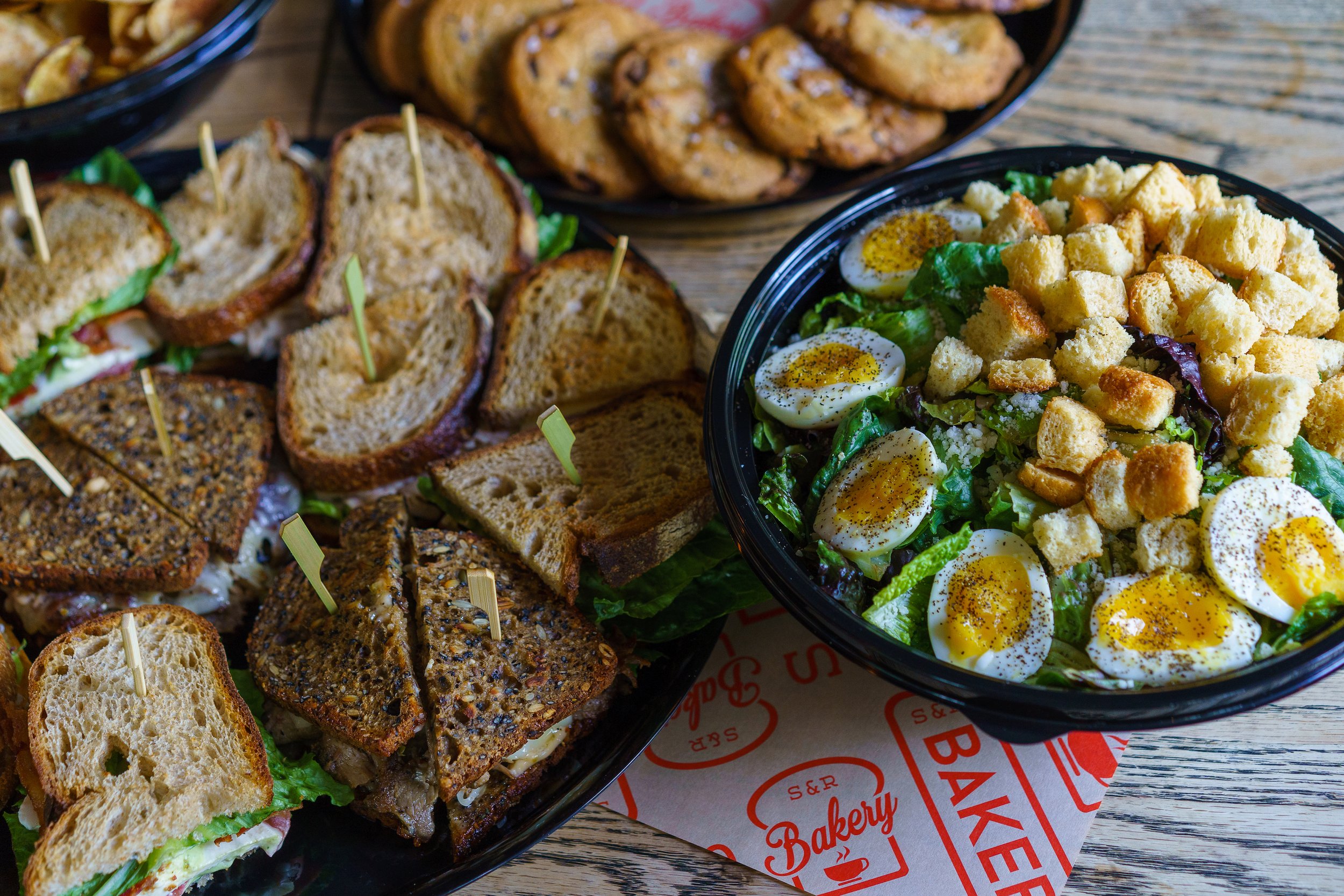Extraordinary Catering Maddington Solutions for Your Following Event
Extraordinary Catering Maddington Solutions for Your Following Event
Blog Article
Recognizing the Art of Bakery Products: From Fresh Baked Breads to Alluring Pastries and Finger Foods
From the science behind the ideal loaf of bread, where fermentation and gluten advancement play crucial functions, to the skill required for developing split pastries, each facet exposes an engaging narrative of craftsmanship. The adaptability of finger foods shows just how flavor and structure can be artfully integrated to engage diverse taste choices.
The Scientific Research of Bread Making
At the heart of every loaf of bread lies a fascinating interplay of chemistry and biology. The procedure of bread making begins with the mix of flour, yeast, water, and salt-- each component playing an essential duty in the last item.
Yeast, a living organism, ferments the sugars present in the flour, creating carbon dioxide and alcohol in the process. The carbon dioxide gas develops bubbles in the dough, causing it to increase and establish a light structure. The temperature level and moisture throughout fermentation dramatically affect yeast activity and, consequently, the bread's taste and texture.

Mastering Bread Methods
Just how can one achieve the fragile equilibrium of appearance and flavor that specifies remarkable pastry? Understanding pastry methods calls for a deep understanding of ingredients, approaches, and the science behind them. Fundamental to this craft is the option of top notch active ingredients-- flour, butter, sugar, and eggs-- each playing an essential role in the last product's flavor and structure.
The strategy of lamination, which entails folding layers of dough and butter, develops the wanted flakiness in pastries like croissants and smoke bread. Accuracy in temperature is important, as butter should continue to be chilly to make certain optimal layers. In a similar way, proper mixing methods, such as the creaming technique for cakes, guarantee even unification of air and fat, resulting in a light and ventilated crumb.
Furthermore, keeping the right humidity degrees during cooking can significantly affect the result, making certain that pastries increase properly and achieve that golden-brown surface. The art of pastry likewise demands perseverance and method; each effort boosts one's ability and understanding of the detailed equilibrium required to develop tempting breads that thrill the senses. Mastery in these methods inevitably identifies a competent pastry cook from an amateur.
Kinds of Finger Foods
The world of culinary delights extends beyond breads to incorporate a wide selection of finger link foods, which are celebrated for their ease and adaptability. These bite-sized treats are ideal for celebrations, offering a variety of flavors and textures that provide to varied tastes.

On the sweeter side, bite-sized cupcakes and tiny tarts use a delightful surface to any type of dish, appealing to those with a sweet tooth. Cheese and charcuterie boards serve as an advanced option, permitting guests to customize their bites with an array of meats, fruits, cheeses, and nuts.
Taste Profiles in Cooking
Baking is a complex dancing of flavor profiles that integrates pleasant, savory, and umami notes to produce an unified experience for the taste buds. Recognizing these accounts is vital for bakers looking for to raise their creations.
Active ingredients such as chocolate and sugar present intricate pleasant notes that can either dominate or enhance other tastes. Active ingredients like cheeses, natural herbs, and flavors can change a basic dough into a multifaceted flavor experience.
Umami, often forgotten in baking, plays a significant role in enhancing tastes. Components such as aged cheeses, fermented here items, or perhaps certain nuts add to a full-flavored deepness that enhances total taste.
Furthermore, the interplay of acidity from active ingredients like buttermilk or citrus passion can brighten tastes, using a rejuvenating counterpoint to sweetness. By attentively combining these taste accounts, bakers can craft items that reverberate with varied palates, developing a remarkable cooking experience. Inevitably, understanding taste profiles is key to innovation worldwide of cooking.
Vital Baking Equipments and Ingredients
Recognizing taste profiles in cooking collections the phase for choosing the right devices and click to read ingredients that promote the creation of outstanding baked items. A reputable set of baking frying pans-- such as sheet frying pans, loaf pans, and cake frying pans-- is essential for attaining desired shapes and structures.
Flour offers as the backbone of many dishes; choosing the ideal type-- be it bread, all-purpose, or pastry flour-- can dramatically influence the result. Cooking powder and cooking soda are essential for producing lift in cakes and pastries.
In addition, incorporating taste enhancers like vanilla extract, flavors, and citrus zest can elevate your developments. By making certain access to these essential devices and active ingredients, bakers can confidently start their cooking journey, crafting a diverse range of fascinating baked items.
Final Thought
To conclude, the art of bakeshop products includes an extensive understanding of both creative methods and clinical principles. Proficiency in bread production, pastry prep work, and finger food presentation discloses the elaborate connections in between components and procedures. Moreover, discovering varied flavor accounts enriches the baking experience, while essential devices and components provide the structure for success. Eventually, the enchanting globe of baking grows on the unified interaction of scientific research and creativity, causing a myriad of delightful cooking productions.
Just how can one achieve the delicate balance of texture and flavor that defines remarkable bread? Fundamental to this craft is the selection of high-grade components-- flour, butter, sugar, and eggs-- each playing a critical role in the last product's flavor and texture.

Understanding taste profiles in cooking sets the stage for choosing the right tools and ingredients that promote the creation of remarkable baked products. Checking out diverse taste accounts enhances the baking experience, while important tools and ingredients give the structure for success.
Report this page